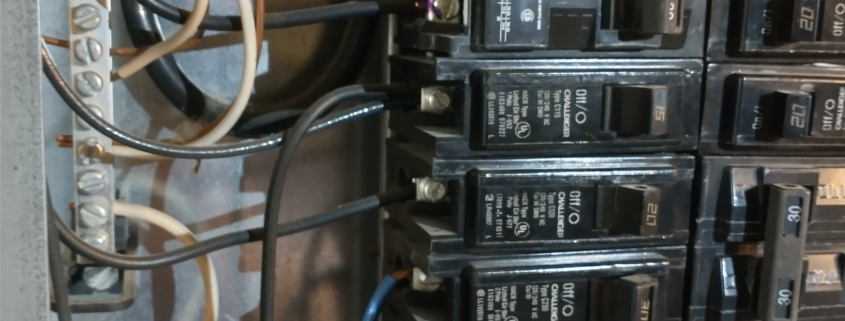Double Tapped Circuit Breakers
What Is a “double tap?
If your electrical panel has a “double-tap,” this means that two wires are connected to a single terminal on a circuit breaker or busbar. Sometimes this may also be referred to as a “double lug.”
This condition is not always a problem. Some circuit breakers are designed to have two wires connected to them. If this is the case, your circuit breaker should note this clearly, and the circuit breaker’s terminal will have a design that accommodates both wires. Usually, this design consists of a flat, square plate under the terminal screw. One wire can be put under the plate on each side of the screw.
If your circuit breaker, however, is not designed to have two wires connected, but someone connects two wires anyway, then you have a condition that could be dangerous, and it should be corrected as soon as possible by a qualified electrical contractor.
How could a double tap be dangerous?
With two wires connected to the same breaker or terminal, overheating of the circuit breaker could occur. It can also be difficult or impossible to get both wires fastened tightly in this situation, which can result in arcing. Arcing occurring anywhere in your electrical system is extremely dangerous and could also damage your home’s electronics.
Double tapping is a common condition found during home inspections. If your home inspector identifies this on your inspection report, you should not try to fix the double tap yourself.
Contact a qualified electrical contractor for repairs immediately. They will determine which wire belongs in the circuit breaker and which one does not. They may have to add an additional circuit breaker or replace the existing one. Another way they may address the concern is to create what is known as a “pig tail.” Using this method, they will connect a short length of wire to the breaker, and then connect that wire to the other two wires using a wire nut. Your electrician will know the best solution for your specific situation.





Leave a Reply
Want to join the discussion?Feel free to contribute!